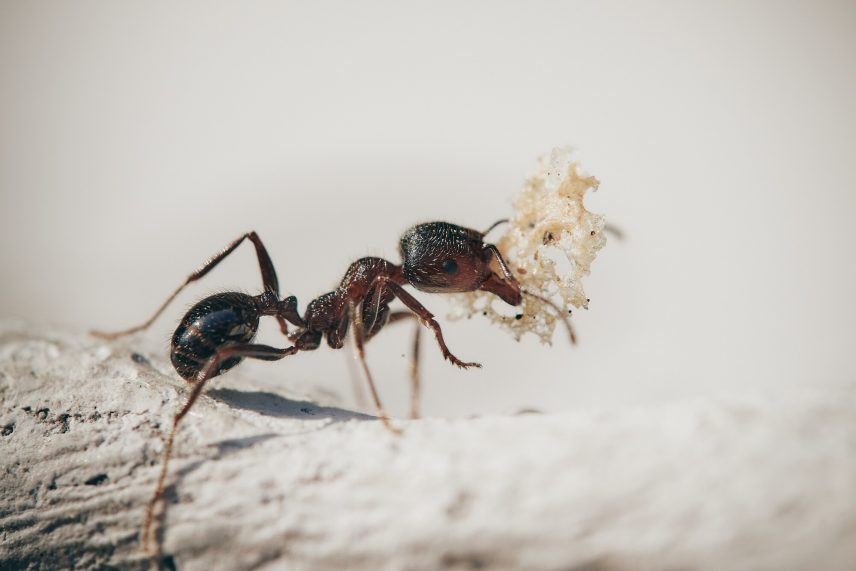Having ants in your home is no picnic! What may seem like one or two ants could actually be a whole ant colony living right under your nose.
So what’s the big deal with having ants? Depending on the type of ant, you could lose food to them, risk the structural foundation of your home, or even end up with painful bites.
Any infestation should be dealt with by a professional. But how do you know if you just happened to see a few ants that one time or if you really do have an infestation in your home?
Keep reading to find out about common household ants and the signs that you have a colony.
Common Types of Household Ants
There are three common types of ants that you’ll find in your home in Pennsylvania. Each comes with its own set of problems for you to worry about. So let’s get started identifying them and learning what’s so bad about them.
Carpenter Ants
Carpenter ants are the largest that you’re likely to find in your home. They’re typically black but can come in a variety of colors. And they can cause a lot of damage to your home.
Unlike termites, carpenter ants do not actually eat the wood they destroy. They simply break it apart to build nests inside. They particularly like damp wood, so it’s important to make sure that the pipes of your home do not have leaks.
A colony of carpenter ants can cause serious damage to the structural integrity of your home. Don’t wait for your home to literally start falling apart before you decide to deal with them.
Pavement Ants
If your home has any concrete components, you may find pavement ants. These ants like to build their nests inside the tiny cracks and crevices found in compromised pavement.
Pavement ants are much smaller than carpenter ants and come in a red to brown to black color. They will try to steal bits of your food to bring back to their nest and end up contaminating everything in your cabinets. Do you want to pour a box of cereal to discover a bunch of ants crawling around inside?
Pavement ants also have a stinger. While they aren’t aggressive, if you have enough of them, they’re likely to end up in your shoes or sheets at some point. There, they’ll probably get agitated enough to leave you with a painful sting.
Odorous House Ants
Have you ever crushed an ant and smelled a strange coconut odor? If you have, that was an odorous house ant. They are brown or black in color, smaller than carpenter ants, and emit that odor when threatened or killed. Some odorous ants also have wings.
They’ll love anything in your kitchen that’s sweet. That includes candy, juice, pastries, fruit, you name it! If you love having fresh fruit out to enjoy, you can say goodbye to it with an odorous house ant infestation.
Signs of an Ant Colony
Now you know how to differentiate between the kinds of ants in your home and what dangers they offer, but how do you know that you have an ant problem. You may not want to pay for an exterminator without knowing for sure you have a colony. Here are the common signs.
Ant Trails
You can set up a little test to see where the ants are coming from. Place some peanut butter and honey in it on your floor. Before long, ants will start coming to inspect. Ants release a pheromone to signal to other ants when they’ve found food. As more ants learn where it is, a line starts to build up.
If you have an ant colony living in your home, you’ll see the trail leading to a small crack or crevice in your home. Right inside that crevice is likely where the ants have built a nest.
Water Damage
Ants, especially carpenter ants, prefer to build their homes in damaged wood. If you notice a bit of water damage, cut into the wood and see if there are ants inside.
Saw Dust Trails
Carpenter ants will leave little sawdust trails after destroying the wood of your home. Check near the wooden components of your home, such as support beams, windowsills, and door frames.
Discarded Wings
Some ant species like odorous house ants have wings that they grow seasonally and then discard. If you find small insect wings around your home, you likely have an infestation that’s been there for some time.
Rustling Noises
It’s hard for that many ants to stay quiet. Ant colonies are very active all the time. They have amazing systems with all different kinds of workers who are very devoted to their jobs and the survival of the nest. If you can hear them rustling when you put your ear up to a wall, it’s a sign you need to be getting rid of ants.
Don’t Do It Alone
You may be tempted to try to get rid of ants alone, but this is not advisable. Common pesticides that you may try to use are dangerous to children and pets.
If you try a nonchemical approach, you may just break the nest up into multiple nests. A new queen will be chosen in each nest, and now you’ve just multiplied your ant problem.
Instead, search for “pest control near me” and have a professional handle your ant colony. A professional exterminator will know how to quickly, effectively, and safely remove and kill the ant colony.
An Ant Free Home
As soon as you suspect an ant colony, whether it’s carpenter ants, pavement ants, or odorous house ants, call a pest control for ants. Remember the tell-tale signs of ant trails, sawdust, discarded wings, and rustling noises. When in doubt, get a consultation.
Are you ready for your home to be inspected for ants? Contact us today about your pest problem.


